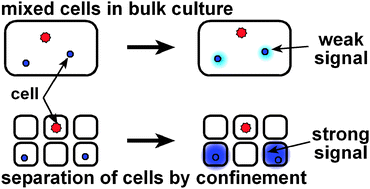Microfluidic stochastic confinement enhances analysis of rare cells by isolating cells and creating high density environments for control of diffusible signals†
Abstract
Rare

- This article is part of the themed collection: From microfluidic applications to nanofluidic phenomena

 Please wait while we load your content...
Please wait while we load your content...